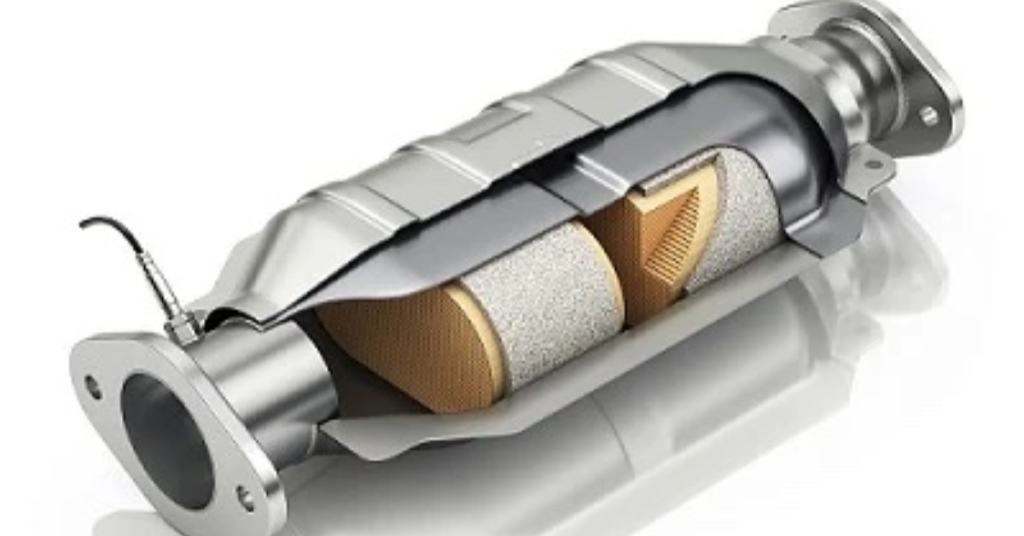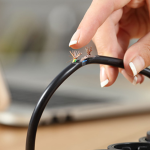Did you know that when a car or truck engine is running, the fuel it burns produce toxic gases, such as Nitrogen Oxide, Carbon Monoxide, and unburnt fuel residue? Because of these environmental hazards, the Catalytic Converter (“CAT”) was invented. The main function of a CAT is to help reduce emissions from cars and trucks. For decades, car and truck manufacturers around the world have been adding Catalytic Converters (“CAT”) to the standard assembly of vehicles. These CATs are typically located under the hood, and attached to the motor, just right before the exhaust system. This setup is designed to help reduce emissions and keep the air we breathe clean. Gases produced by the motor go straight into the CAT and exit the other side, often less than 1 10th of a second later. The CAT processes the toxic substances and produces harmless water vapor and oxygen, which exit the vehicle’s exhaust system. The CAT can eliminate up to 99% of an engine’s toxic gases.
In this post, we will cover the basics of catalytic converters, how they are recycled, and how you can make money from scrapping spent CATs.
What Is A Catalytic Converter (CAT) Made Of?
The exterior housing of the CAT, or “shell”, is made of steel or a low grade stainless steel alloy. It is important to note that the contents of a CAT can affect its functionality, scrap value, and how it protects the environment. The housing contains 2 blocks that feature a ceramic structure. They are often coated with 3 rare precious metals: Platinum, Palladium, and Rhodium. The blocks are the core (also called an “Auto Motive Core”) of the converter and are also commonly known in the recycling industry as a “honeycomb” or “biscuit.” Each block is filled with thousands of micro ducts, which are coated with the above-mentioned precious metals. These metals cause the toxic gases to react and recombine, producing other gases that are harmless to your health. The elements (metals) remain unaltered and do not rust. That’s why Platinum, Palladium, and Rhodium are ideal metals for this process. Because these precious metals are so expensive, the CAT is designed to expose the maximum surface area of these elements to the exhaust stream while minimizing the quantity of precious metals required (the area of the honeycomb equals that of a football field).
How Does A Catalytic Converter Work?
The process of converting toxic gases to harmless substances happens most efficiently when the CAT is hot. It can reach internal temperatures of up to 1,300 °F (700°C)! The toxic gases heat up the converter. The converter essentially acts like a small super-heated furnace to breakdown and reform gas molecules into harmless substances. These elements then exit the unit at temperatures as high as 900 degrees Fahrenheit. A car typically has to travel about six miles before the CAT converter reaches its ideal operating temperature and start filtering out harmful gases from the engine.
Many CATs have oxygen sensors built into them, which electronically monitor the amount of exhaust fumes and uses this information to control the vehicle’s fuel injection system. This information is sent to the vehicle’s engine computer and results in both the CAT converter and vehicle running more efficiently.
Why Do CATs Go Bad?
Have you ever noticed a sulfur-like, rotten-egg odor coming from your car or truck after driving it? This is a common sign that the CAT is starting to malfunction. Most Cat’s will properly function for the life-span of a vehicle. But over time, due to the high heat generated in the honeycomb, or from a malfunctioning vehicle engine or other mechanical issues–Cat’s can fail.
– The vehicle is burning more gas than usual
– A visit to your mechanic or local inspection station for a car inspection results in a failed emissions test
– A check-engine light is on
– Difficulty starting your vehicle
– There is a lack of acceleration
How Are CATs Recycled?
When a CAT converter fails, it must be replaced. What should you do with it? Some metal recyclers, including H&C Metals, accept and pay for spent CAT converter cores as scrap.
H&C Metals is the 1st step in the recycling process. Spent CATs are shipped to the 2nd step in the recycling process to go through a de-canning process. This way, precious metals, as well as the steel or stainless-steel housing around them can be reclaimed. There is a 100% recovery rate of all these metals! The CATs are placed on a conveyor and a hydraulic shear and/or hammer mill pulverize the scrap core. Small pieces land on a shaker-table where the heavy magnetic metal is separated from the non-magnetic (Nonferrous) materials. A magnet belt picks up the magnetic waste and distributes it to a scrap steel holding area for eventual shipment to a steel mill for smelting or repurposing into new steel products. This then leads to the 3rd stage of recycling a CAT Converter. The catalyst ceramic block (Honeycomb) is picked-up by an air separator, which carries the small solid pieces and automatically drops them into large holding bags.
The 4th recycling step takes place when the bags of crushed cores are sold/shipped to a refinery. There are refineries (smelters) designed to only recycle CAT converters. There, the materials are grinded further to reduce their size before smelting. The ceramic waste is melted in furnaces at 1,200 degrees Fahrenheit for 12 hours. This process separates the non-metallic components (ceramics) from the three precious metals. Once melted, the Nonferrous recoverable metal content is removed first. The precious metals that remain are cooled and solidified, then a multi-stage chemical separation process creates a purified version of platinum, palladium, and rhodium.
The final stage of the recycling process occurs when the refinery sells the purified precious metals to various manufacturers and industries — not limited to those building catalytic converters. It’s estimated that 80% of the demand for PGM’s (precious grade metals) is derived from auto manufacturing industries. However, other applications include industrial raw materials such as nylon and synthetic rubber; jet engine and missile parts as conductors; and consumer electronics and jewelry.
Environmental Benefits Of Recycling CATs
American emission pollutants have dropped on an average of over 70% since car manufacturers began to include CAT converters in their automobile designs.
It is estimated that refiners need about eight tons of raw precious metals ore to produce one ounce of platinum. But, recycling spent CAT converters means you can generate the same quantity of platinum from only 30 pounds of auto CAT cores. Therefore, it is much more cost effective and environmentally friendly for CAT refiners to capture precious metals from recycling spent cores than to mine raw ore from the Earth.
How To Sell CATs Converters As Scrap. How Much Are They Worth?
The auto core, or honeycomb, found inside the outer metal housing or “shell”, contains three rare precious metals: Platinum, Palladium, and Rhodium. Although the quantity of these metals is extremely small, their presence is the reason why failed CATs have greater value than the scrap values of outer steel or low-grade stainless steel shells and attached steel exhaust pipes. Without the biscuit inside, the CAT converter will have minimum value and be graded and paid for as steel by a metal recycling company.
For anyone who wants to scrap a CAT, it is highly recommended that they avoid removing the honeycomb from the outer shell if they think separating the steel shell from the core will result in higher scrap value for the core. This is not the case. In order for the scrap dealer/CAT buyer to determine the value of the CAT, the entire CAT must be intact. The whole CAT will provide the buyer with the recognizable, necessary information to determine the CATs value. Crucial information includes the imprinted/stamped presence of a specific CAT model number, possible auto manufacturer’s logo or name, as well as the design and construction of the unit.
The percentage of precious metals built into a converter is determined by the type of combustion engine and auto model the CAT will be attached to. The amount of toxins produced in a vehicle’s exhaust system determines the quantity of precious metals required to meet emissions standards for that model and the CAT’s eventual scrap value. The value of any spent CAT is also determined by what the global commodity value is at any time for Platinum, Palladium, and Rhodium.
Ultimately, scrap value is set by the CAT refineries and what they pay determines what your local scrap buyer will pay you. There are hundreds of types and categories of Catalytic Converters on today’s market.
Many scrap metal dealers do not purchase spent CATs, but don’t worry; H&C Metals has the expertise and experience to quickly and accurately grade your spent CAT. When you deliver any type of scrap metal to us, you can also conveniently bring your CATs to us! We pay top dollar for CATs—in cash! Call (973)589-7778 to speak with an H&C Metals representative today and get a professional CAT quote.



